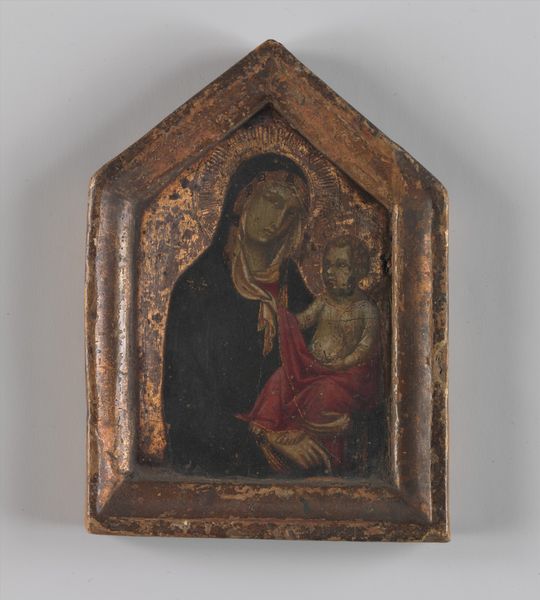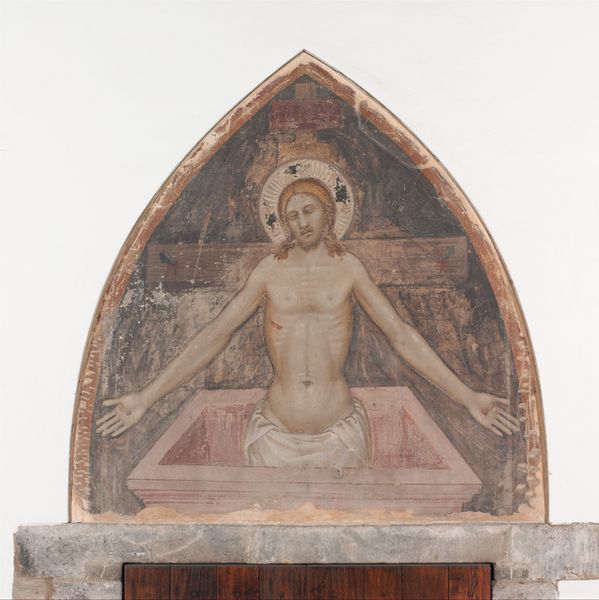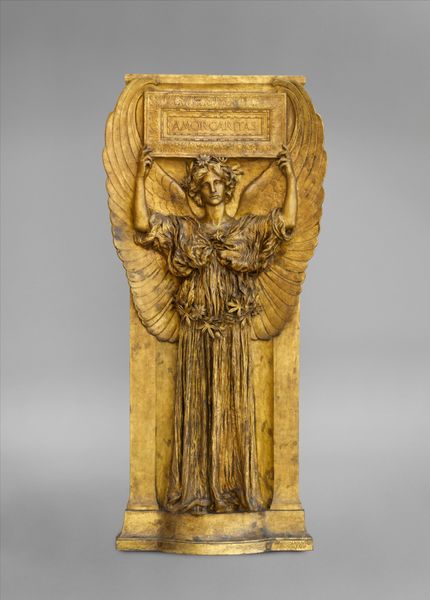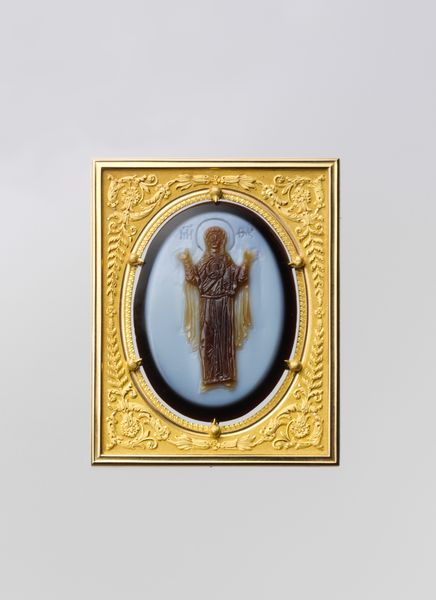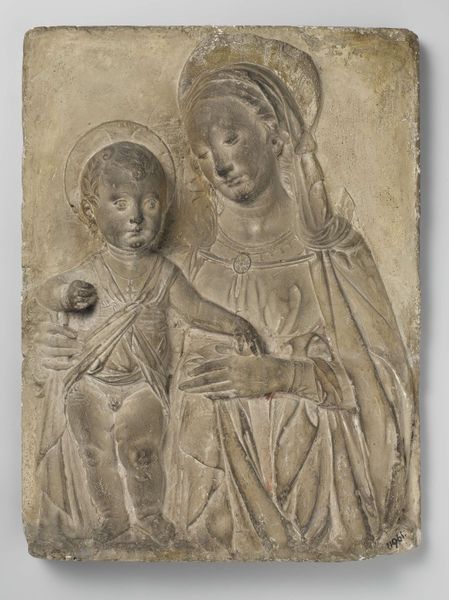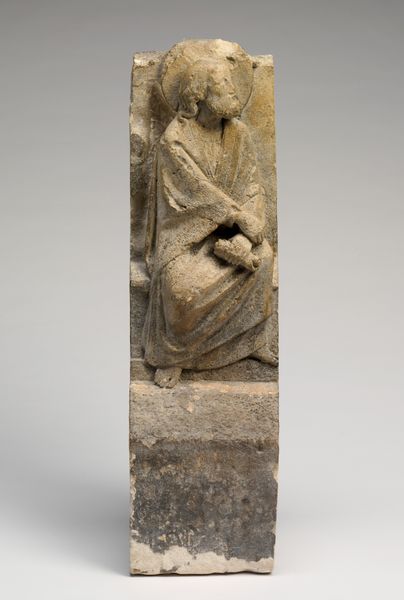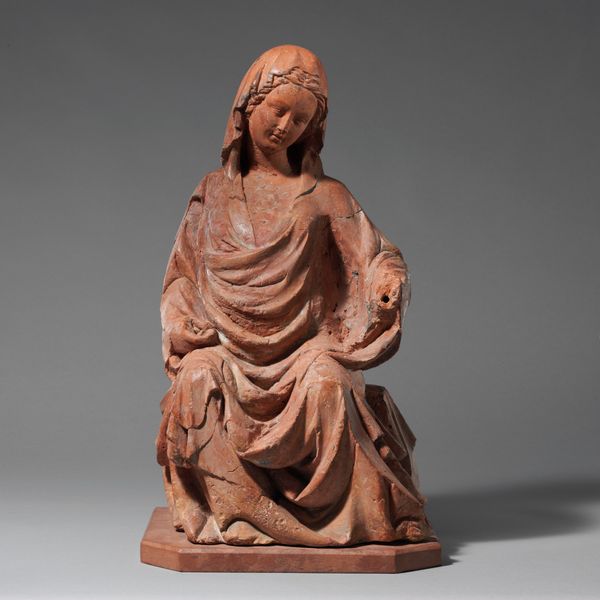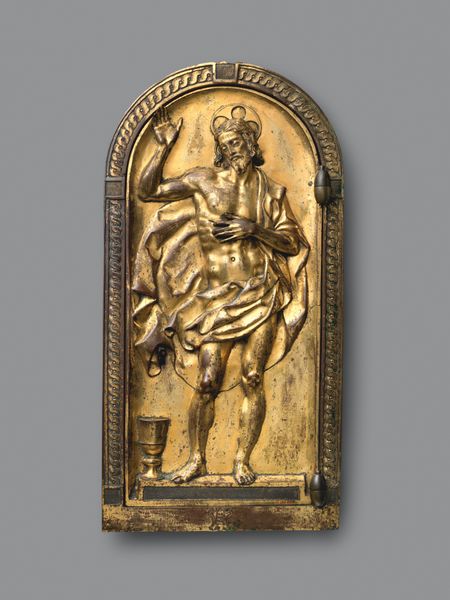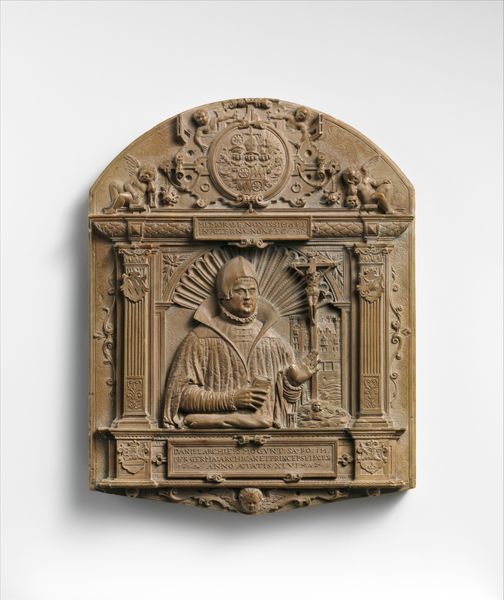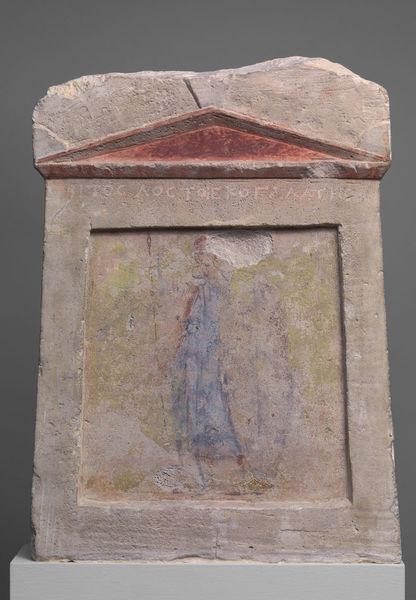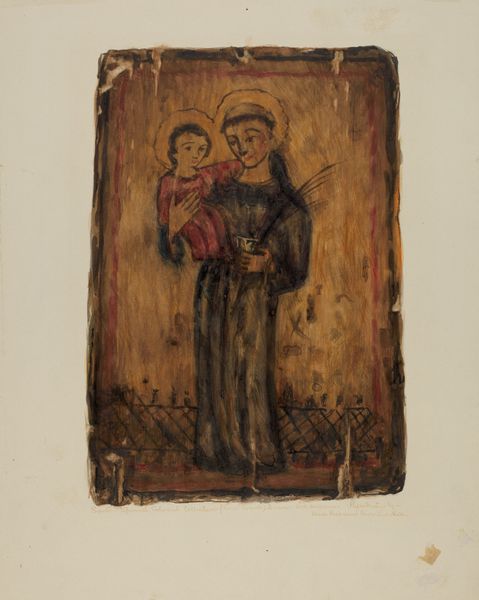
tempera, painting, wood
#
portrait
#
byzantine-art
#
medieval
#
tempera
#
painting
#
sculpture
#
figuration
#
chiaroscuro
#
wood
#
history-painting
#
christ
Dimensions: Overall: 6 1/4 x 4 5/8 in. (15.8 x 11.8 cm); Picture Surface: 4 3/4 x 3 3/8 in. (12.1 x 8.6 cm)
Copyright: Public Domain
Curator: Welcome. Before us is an early 14th-century tempera on wood panel, titled "Pietà." Its creator is currently unknown. What are your immediate impressions? Editor: Somber. The subdued palette and the figure’s closed eyes evoke a powerful sense of sorrow and resignation. There's also a compelling intimacy in the composition. Curator: Indeed. Observe how the artist utilizes a limited range of colors, primarily earth tones and muted golds. The stark chiaroscuro intensifies the emotional weight. The composition is equally considered. Editor: Yes, but I read that darkness differently. Given its context – likely created for private devotion during a period of immense social upheaval with famine, disease, and constant warfare throughout Europe, particularly in Italy – this Pietà speaks volumes about collective trauma. It presents not just religious sorrow but the shared suffering of communities. Curator: I see your point. But look at the craftsmanship in the rendering of Christ's torso; note the delicate brushstrokes creating subtle gradations in value to describe the planes of his form. Editor: And those subtle gradations further enhance the vulnerability conveyed. The positioning of the hands too suggests restraint, as though preventing any further infliction of harm. Considering the prevalent patriarchal structures of the era, the emphasis on his bare chest renders the figure explicitly vulnerable to social forces, marking an exploration of masculine sorrow rarely portrayed in contemporary depictions of that time. Curator: Perhaps, but to analyze it within its formal Byzantine style, it serves as an exemplar of iconic representation aiming for transcendence, directing our gaze beyond material suffering to an ethereal realm. The meticulous details within that realm act to instill both awe and wonder in the devotee. Editor: While those iconographic elements cannot be overlooked, let’s also not disregard how that aspiration for the ethereal may represent the yearning for release from lived earthly hardships, reflecting historical realities and social yearnings during an age of unrelenting despair. Curator: A nuanced perspective, placing the artwork within multiple interpretative dimensions, simultaneously, a methodology which reveals ever-deeper truths. Editor: Precisely. Artworks resonate most strongly when we see them as both reflections and active agents within history.
Comments
No comments
Be the first to comment and join the conversation on the ultimate creative platform.
